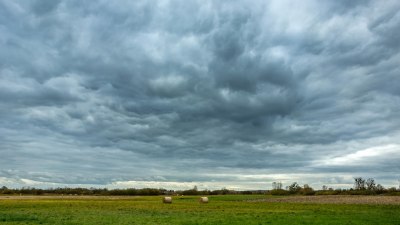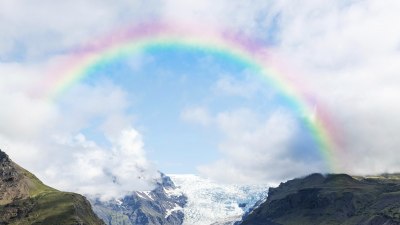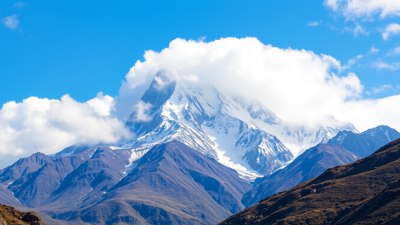Why the Weather at the Edge of the World Hits Different
Explore the unique weather phenomena and emotional impact of remote regions across the globe.

The weather at the edge of the world is unlike anywhere else on the planet. Regions such as the Arctic tundra, the Antarctic ice sheets, and remote coastal areas possess distinct climatic characteristics that not only influence the environment but also the emotional and psychological experiences of those who inhabit them. In this exploration, we delve into the features that make these regions unique, the science behind their weather patterns, and the personal narratives that emerge from those who experience them.
The Geography of Extremes
The geography of the earth plays a critical role in determining climate and weather patterns. Coastal regions, especially those at high latitudes, face unique influences from ocean currents and air masses. For instance, the Gulf Stream affects climates across the Atlantic, while the Humboldt Current cools parts of South America. These currents interact with various land forms, creating microclimates where weather can be drastically different even just a few miles apart. Furthermore, the high-altitude areas of the Himalayas and Andes experience weather phenomena that are as extreme as they are beautiful.
Unique Weather Phenomena
Weather phenomena such as auroras, extreme cold spells, perpetual daylight, and intense storms are hallmarks of these regions. In the Arctic, the phenomenon of polar night can envelop regions in darkness for months, fostering an eerie atmosphere that profoundly affects human behavior. Conversely, the midnight sun during summer brings endless daylight, which can be a blessing and a curse for the inhabitants. Such weather patterns evoke strong emotional responses and can impact mental health significantly.
The Emotional Impact of Remote Weather
The emotional impact of experiencing weather in remote areas can differ greatly from more temperate regions. The harsh realities of winter in places like Nuuk, Greenland, where average temperatures can dip to -30 degrees Celsius, force residents to adapt systems of resilience. Surveys have shown that individuals living in these conditions often report a unique appreciation for nature’s beauty and a sense of community born from shared hardships. In contrast, the challenge of enduring relentless storms in coastal areas can lead to feelings of isolation and frustration, underscoring the complex relationship between climate and the human spirit.
A Sense of Adventure
For many, the weather at the edge of the world evokes a sense of adventure. The unpredictability of weather in these areas encourages exploration and fosters personal stories drenched in the thrill of the unknown. The tumultuous storms of Antarctica or the sudden changes in the fjords of Norway can lead to exhilarating experiences for adventurers and travelers alike, reshaping their perspectives on nature and survival. Documentaries and travel blogs often capture these moments, illustrating the compelling connection between extreme weather and the human experience.
Scientific Observations and Studies
Scientists have long been intrigued by the weather patterns found in the world’s most remote locations. Studies in these areas yield crucial data that help us understand climate change and its broader implications. The melting ice caps in the Arctic serve as a stark indicator of global temperature rise, while dense fogs along coastal cliffs provide insights into sea level rise and its potential impact on human settlement. These scientific observations help contextualize the emotional narratives of individuals living in these extreme conditions, bringing together facts and feelings in meaningful ways.
Personal Stories from the Edge
Interviews and personal stories from residents of these remote regions reflect the beauty and challenges of living amidst extreme weather. A fisherman in Newfoundland might share tales of braving the fierce North Atlantic storms while feeling a deep connection to the “Old World.” Meanwhile, an explorer trekking through the snow-covered valleys of Alaska may recount experiences of solitude and reflection, punctuated by the awe-inspiring northern lights. Such stories often serve to connect people from vastly different backgrounds to the universal themes of endurance, humanity, and the profound effect of one’s environment.
Community Building in Harsh Climates
In such remote regions, individuals often rely on one another to navigate the challenges posed by extreme weather. Communities come together for shared experiences, celebrations, and preparation for harsh seasons. Local festivals, showcasing resilience and unity, help forge bonds between residents. For instance, the Frostival in Winnipeg, Canada, embraces winter as a shared experience, featuring activities that highlight both the beauty and joy found in snowy landscapes. Such events are essential for maintaining morale in places where isolation can be a significant concern.
Finding Beauty in Extremes
The weather at the edge of the world indeed hits differently because it shapes every aspect of life, from daily routines to community dynamics. Understanding the connection between extreme weather and human experience reveals layers of meaning that go beyond simple meteorological phenomena. Weather has the power to evoke emotions, inspire adventures, and foster a sense of belonging, reminding us all that while we may encounter the elements differently, our shared experiences can bind us together. These insights also challenge our resolve to protect these fragile ecosystems that harbor such vivid narratives. It’s a call to action, urging everyone to appreciate and advocate for the wonders of the world’s most extreme climates, ensuring that future generations can also experience the beauty that lies at the edges of our world.











